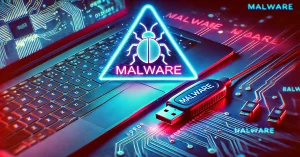FBI Deletes PlugX Malware: Inside the Multi-Month Operation
The U.S. Federal Bureau of Investigation (FBI) has achieved a significant milestone in cybersecurity. In a “multi-month law enforcement operation,” the FBI successfully deleted the PlugX malware from over 4,250 infected systems. This remote access trojan (RAT), associated with Chinese state-sponsored hacking groups, posed a serious threat to global cybersecurity. This article delves into the details of the operation, the nature of PlugX Malware, and its broader implications for cybersecurity.
Cyberattacks and malware incidents have surged in recent years, with state-sponsored groups playing a significant role in these threats. The PlugX malware operation underscores the persistent challenges posed by cyber espionage campaigns. By understanding the nuances of such threats, organizations can better prepare for future incidents and strengthen their digital defenses.
Understanding PlugX Malware
What is PlugX Malware?
PlugX Malware, also known as Korplug, is a sophisticated remote access trojan (RAT) that enables cybercriminals to steal sensitive data and gain remote control over compromised systems. Its usage is often linked to Mustang Panda, a state-sponsored hacking group associated with China.
PlugX Malware has been active since at least 2008 and has evolved over time to include advanced features. This malware is particularly dangerous because of its ability to remain undetected while operating stealthily in the background. Once deployed, it provides attackers with complete access to the targeted system, enabling them to:
- Monitor user activities.
- Capture sensitive credentials.
- Install additional malicious tools.
- Manipulate files and system settings.
Capabilities and Spread
PlugX Malware exhibits advanced capabilities that make it a preferred tool for cyber espionage:
- Data Theft: Extracting sensitive information from compromised devices, such as financial records, confidential emails, and intellectual property.
- Remote Control: Allowing attackers to execute commands remotely, effectively taking over infected systems.
- Self-Propagation: Spreading through USB devices to other systems, thereby increasing its reach across networks.
The malware has targeted a broad range of entities, including:
- U.S. victims such as businesses, government institutions, and research organizations.
- European and Asian governments, where it has compromised critical infrastructure.
- Activist groups and dissidents, particularly those critical of the Chinese government.
Details of the FBI’s Operation
Planning and Execution
The operation, authorized by U.S. courts, was part of a larger global effort to eliminate PlugX malware. Beginning in late July 2024, this “disinfection” campaign leveraged technical expertise and international collaboration. The operation highlighted the importance of partnerships between public and private sectors in combating cyber threats.
Key steps in the operation included:
- Identification: Detecting infected systems and associated PlugX Malware variants. This involved analyzing malware signatures and monitoring network traffic for suspicious activity.
- Command Execution: Deploying a self-delete command to remove the malware. This was a carefully coordinated effort to ensure that legitimate system functions were not affected.
- Collaboration: Coordinating with cybersecurity firms like Sekoia and legal authorities globally. The Paris Prosecutor’s Office played a critical role in enabling international legal frameworks.
Technical Details
The FBI’s approach involved a unique technique that leveraged the attacker’s infrastructure against them:
- Sinkholing a Server: Sekoia purchased the attacker-controlled server for just $7, enabling them to issue commands to infected systems. This low-cost solution demonstrated the creative problem-solving required in cybersecurity.
- Self-Deletion Commands: These commands were designed to:
- Delete PlugX Malware files and registry keys.
- Stop the malware application.
- Clean up all traces without impacting legitimate files or functions.
The deletion process involved several carefully orchestrated steps:
- Creating a temporary script to stop the malware’s operation.
- Removing associated directories and registry entries.
- Ensuring that all traces of the malware were eradicated without leaving behind residual vulnerabilities.
Results Achieved
The results of this operation were far-reaching:
- Over 4,250 infected systems were cleaned in the U.S. alone.
- More than 59,475 disinfection payloads were deployed globally, targeting 5,539 IP addresses across 10 countries.
- The operation served as a model for future international efforts against malware and cybercrime.
The Role of Mustang Panda
Who Are Mustang Panda?
Mustang Panda, also known by aliases such as Bronze President and RedDelta, is a state-sponsored hacking group linked to the People’s Republic of China. Active since at least 2014, the group is notorious for its:
- Espionage campaigns targeting governments, businesses, and activists.
- Sophisticated cyber tools, including PlugX Malware.
The group has consistently refined its tactics to evade detection. It employs spear-phishing emails, often disguising malicious attachments as legitimate documents, to infect targets.
Global Impact
The group’s activities have targeted regions including:
- Taiwan, Hong Kong, and Japan, where it has focused on governmental and defense sectors.
- South Korea, India, and Mongolia, aiming to exploit geopolitical tensions.
- Southeast Asian nations like Indonesia and Thailand, targeting economic and strategic interests.
Their operations underscore the growing threat of state-sponsored cyberattacks on critical infrastructure and sensitive data. These campaigns have far-reaching consequences, disrupting operations, stealing intellectual property, and eroding trust in digital systems.
Broader Implications for Cybersecurity
Lessons Learned
The PlugX Malware case offers valuable insights for organizations and governments:
- Proactive Defense: Governments and organizations must invest in proactive measures, such as threat detection and response systems. Regular system audits and updates are essential to close security gaps.
- Collaboration: International cooperation is critical in combating cyber threats that cross borders. Sharing intelligence and resources strengthens the collective defense against cybercrime.
- Awareness and Training: Educating employees about phishing attacks and malware risks can significantly reduce vulnerabilities. Regular training sessions and awareness campaigns are vital components of cybersecurity strategies.
Emerging Trends
The PlugX Malware case highlights several trends in cybersecurity:
- Increased Use of Automation: Automated tools are becoming indispensable in malware detection and incident response.
- Growing Sophistication of State-Sponsored Hacking Tools: Tools like PlugX Malware demonstrate the need for constant vigilance and innovation in defense mechanisms.
- Enhanced Collaboration: Public-private partnerships are essential to address the evolving landscape of cyber threats effectively.
The Need for Resilience
Resilience is key to managing cyber risks. Organizations should adopt a multi-layered approach to security, incorporating:
- Endpoint protection.
- Network segmentation.
- Regular backups to mitigate ransomware and other attacks.
Conclusion and Key Takeaways
The FBI’s successful operation against PlugX Malware is a testament to the importance of global collaboration and technological innovation in cybersecurity. By removing this dangerous malware, the agency has not only protected thousands of systems but also sent a strong message to cybercriminals worldwide.
Actionable Insights
- Invest in Cybersecurity: Strengthen your organization’s defenses through updated software, regular audits, and employee training.
- Build Partnerships: Collaborate with industry peers and government agencies to share insights and resources.
- Stay Informed: Monitor emerging threats and adopt best practices to stay ahead of cybercriminals.
Stay informed and secure your digital assets:
- Learn More: Explore resources on threat intelligence and malware prevention.
- Get Involved: Collaborate with cybersecurity experts to strengthen defenses.
- Share Insights: Spread awareness about the importance of proactive cybersecurity measures.







